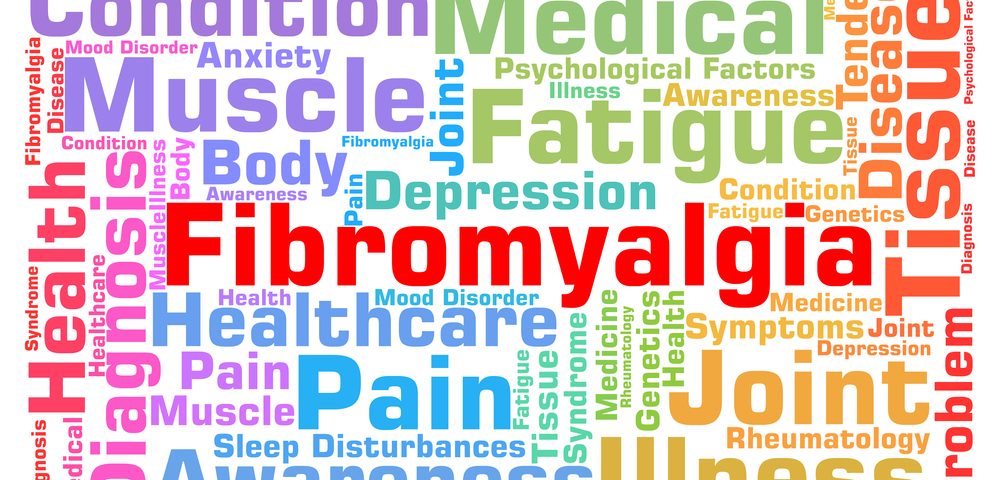People with fibromyalgia say the top five symptoms most important for healthcare providers to track are fatigue, physical function, pain intensity, pain interference, and duration of morning joint stiffness, according to a study using the ArthritisPower app.
The app, developed by the digital patient community CreakyJoints, also was used to help researchers distinguish between the overlapping symptoms of fibromyalgia and axial spondyloarthritis (axSpA).
Data from these studies were shared at the EULAR E-Congress 2020, presented virtually by the European League Against Rheumatism.
Patient-reported outcomes are being used increasingly to monitor disease activity and variability, as well as the effectiveness of treatments.
However, little is known about which specific measures patients with fibromyalgia find most important to communicate their experience with the disease and its treatment. Taking advantage of the widespread use of smartphones and fitness trackers, digital apps can be useful to survey patients.
CreakyJoints created the ArthritisPower app, which is a registry for people with fibromyalgia, and rheumatic conditions such as rheumatoid and psoriatic arthritis, systemic lupus erythematosus, ankylosing spondylitis, osteoporosis, and osteoarthritis.
The app allows patients to enter information about their symptoms and treatments in real-time and helps healthcare providers recommend treatments.
“Smartphones, wearables, and social media are ubiquitous in our daily lives and we are increasingly comfortable using these tools to help us communicate with each other and access information, including about our own health,” W. Benjamin Nowell, PhD, director of Patient-Centered Research at CreakyJoints, said in a press release.
“We wanted to learn more about the feasibility of patients using a smartphone app and commercial grade fitness tracker to share daily data over an extended period of time, as well as gain insight into which aspects of their condition patients prefer to track digitally,” said Nowell, who is a principal investigator of ArthritisPower.
The study, “Which Patient-Reported Outcomes Do Rheumatology Patients Find Important to Track Digitally? A Real-World Longitudinal Study in ArthritisPower,” was conducted by a team from the Global Healthy Living Foundation in collaboration with investigators at Eli Lilly & Company and the University of Alabama at Birmingham.
Adult patients within the ArthritisPower registry were asked to use the app to select up to 10 symptom measures they felt were important to track.
Patients made a selection at study start (baseline) and then monthly over three months, and they had the option to continue to track the same selection or switch to a different measure. After three months, participants completed an exit survey to rank the top five measures from all selected criteria during the study.
Mean age among the 184 participants who completed the study was nearly 56. Most participants (89.3%) were women, 91.3% were white, and about 40% reported fibromyalgia.
The top five symptoms across all conditions were fatigue, physical function, pain intensity, pain interference (in daily, social, or work-related tasks), and duration of morning joint stiffness.
“Not only did this study tell us about the symptoms rheumatic disease patients feel are most important to track, we saw good participation across the study period, meaning that respondents felt comfortable using the ArthritisPower app to participate in longitudinal research,” said Nowell. “This is especially important as these and other instruments will be pivotal for successful telehealth integration into patients’ and healthcare providers’ lives.”
The ArthritisPower app also was used in the study “Patient Perceptions of Fibromyalgia Symptoms and the Overlap with Axial Spondyloarthritis.“ AxSpA is a general term for inflammatory arthritis that affects the spine and joints and includes ankylosing spondylitis and non-radiographic axial spondyloarthritis.
Differentiating between fibromyalgia and axSpA can be challenging to diagnose.
Researchers at the Global Healthy Living Foundation, the University of Alabama at Birmingham, and the University of Pennsylvania, invited adults with fibromyalgia, but without rheumatoid arthritis or psoriatic arthritis, who were in the ArthritisPower registry.
Patients were asked if they had a diagnosis of axSpA or ankylosing spondylitis. They completed outcomes measures, including the Patient Reported Outcomes Measurement Information System (PROMIS), which tracks pain, sleep disturbances, and fatigue, as well as the Bath Ankylosing Spondylitis Disease Activity Index (BASDAI). They also completed a 57-item customized survey developed in collaboration by researchers and patients.
A total of 231 patients completed the survey as of January. Mean age was 52, and most were female (97%) and white (89%). Forty participants (17%) reported axSpA, 64% said they had osteoarthritis, 6% gout, 5% had inflammatory bowel disease, and 4% reported lupus.
Half of all patients perceived fibromyalgia to be “rarely” or “never” adequately managed, 80% felt that they had an undiagnosed condition in addition to fibromyalgia, and 75% reported being able to tell the difference between pain due to fibromyalgia or because of an additional condition.
Back pain lasting more than three months was reported by 95% of those with axSpA and by 94% of patients without axSpA.
Of the 191 patients without an axSpA diagnosis, 6% remembered their healthcare provider discussing the possibility of axSpA, more than half (53%) believed their axSpA should have been diagnosed earlier, and 33% said a reason for the delay was their doctor thinking fibromyalgia was the cause of axSpA symptoms.
“Patients with [fibromyalgia] often experience symptoms of axSpA and the two conditions can occur concomitantly [at the same time],” the researchers wrote. “Additional research is needed to improve the triage, diagnosis, and education of patients with [fibromyalgia] and symptoms of axSpA.”

